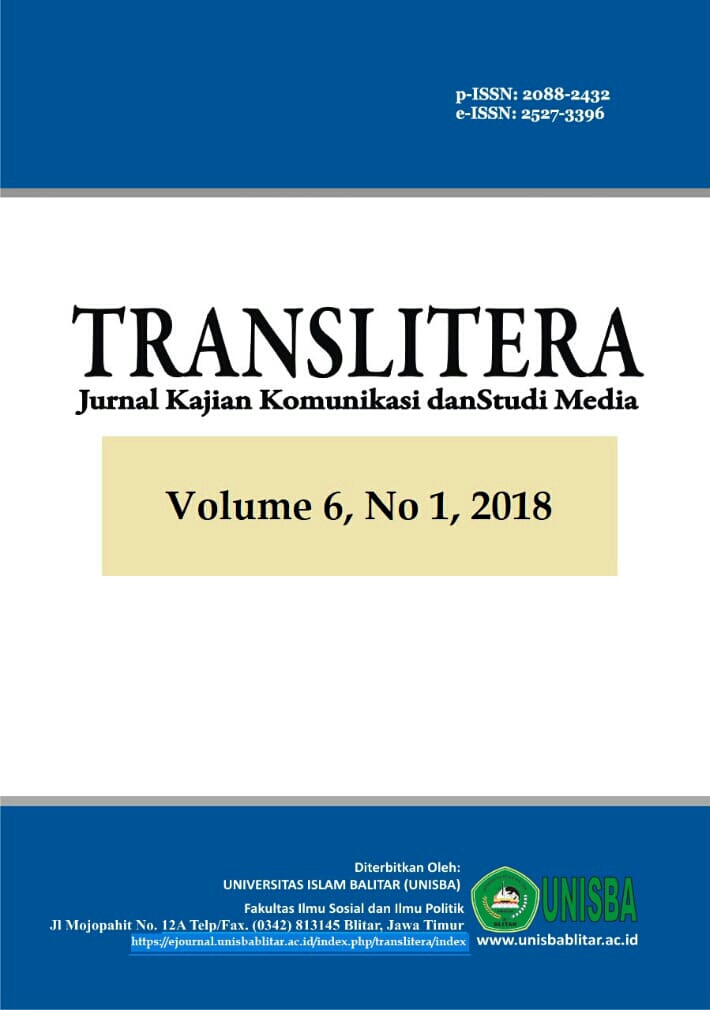MISKOMUNIKASI DIADIK DENGAN KAUM TULI
Analisis Komunikasi Interpersonal dengan Kaum Tuli
DOI:
https://doi.org/10.35457/translitera.v6i1.583Keywords:
Interpersonal Communication, Miscommunication, The Deafs.Abstract
The deafs communicate non-verbally by sign speech. The sign speech that is not understanable by the communicator or the communicant, causes miscommunication. The understanding of the sign speech meaning is needed in order to make a positive interpersonalcommunication and relationship. The aim of the research is to find out interpersonal communication in the understanding of non-verbal communication with sign speech, decrease the conflict that causes miscommunication. The kind of the research is qualitative research with data collecting technique of theparticipant observation, interview, and documentary research. The data analysis implemented is qualitative data analysis with interactive model from Miles and Huberman. The kind of the research is descriptive qualitative research, explains and implements the research model in its real condition, the data used is verbal data. The primary and secondary data are obtained from the result of interview, observation, and literary review. The result of the research shows that the positive interpersonal communication grows positive interpersonal relationship, and grows the confidence for the deafs. The result of the research is based on interpersonal communication, they are: openess, emphaty, supportiveness, positiveness, equality. The result shows the needs more openess, emphaty, supportiveness, and positiveness from the communicator or communicant who are not deaf.

Downloads
Published
Issue
Section
License
Authors who publish with this journal agree to the following terms:
- Copyright on any article is retained by the author(s).
- Author grant the journal, right of first publication with the work simultaneously licensed under a Creative Commons Attribution License that allows others to share the work with an acknowledgement of the work’s authorship and initial publication in this journal.
- Authors are able to enter into separate, additional contractual arrangements for the non-exclusive distribution of the journal’s published version of the work (e.g., post it to an institutional repository or publish it in a book), with an acknowledgement of its initial publication in this journal.
- Authors are permitted and encouraged to post their work online (e.g., in institutional repositories or on their website) prior to and during the submission process, as it can lead to productive exchanges, as well as earlier and greater citation of published work.
- The article and any associated published material is distributed under the Creative Commons Attribution-ShareAlike 4.0 International License











